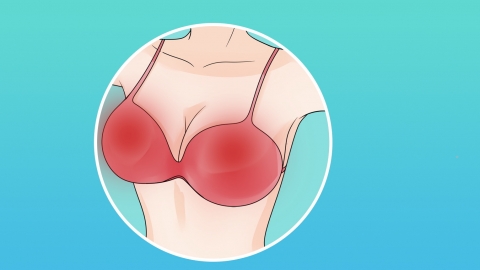How can girls with large breasts reduce breast size?
Macromastia may be caused by genetic factors, pubertal development, obesity, endocrine disorders, or breast hyperplasia. In response to these causes, methods for reducing breast size typically include lifestyle modifications, appropriate exercise, medication, and surgical treatment. If abnormalities occur, timely medical consultation is recommended. A detailed analysis is as follows:

1. Genetic factors: Breast size is partially influenced by heredity. If family members have large breasts, the individual may also have larger breasts. In such cases, reduction is generally difficult. It is important to adjust undergarments, choosing appropriate styles and sizes to support and shape the breasts, while incorporating suitable chest exercises and dietary modifications to reduce fat accumulation.
2. Pubertal development: Puberty is a critical period for breast development, during which hormonal changes may cause rapid breast growth. This is a normal physiological phenomenon, but some girls may wish to avoid excessive breast prominence. At this stage, maintaining a healthy diet and lifestyle, avoiding excessive intake of high-calorie foods, and engaging in appropriate physical activities, such as yoga or swimming, can help shape the chest contour.
3. Obesity: Obesity is a common cause of breast enlargement due to excessive fat accumulation in the chest area, making the breasts appear larger. Reduction primarily involves controlling diet and increasing physical activity to decrease fat accumulation. A balanced diet with reduced intake of high-calorie foods combined with aerobic exercises, such as running or swimming, is recommended to accelerate fat burning.
4. Endocrine disorders: Abnormal changes in endocrine levels may lead to abnormal breast enlargement, often accompanied by symptoms such as menstrual irregularities and mood fluctuations. It is recommended to adjust lifestyle habits, and if necessary, follow medical advice to use medications such as propylthiouracil tablets, methimazole tablets, or propranolol hydrochloride tablets to regulate hormone levels.
5. Mammary hyperplasia: Mammary hyperplasia is a benign breast tissue condition. Excessive response of breast tissue to estrogen may result in breast enlargement accompanied by symptoms such as breast pain and lumps. Following medical advice, medications such as tanshinone capsules, milkweed tablets, or xiaoyao pills can be used to regulate hormone levels and alleviate symptoms of mammary hyperplasia. Alongside medication, appropriate breast massage and warm compresses may also help improve blood circulation and lymphatic drainage in the breast tissue.
Additionally, maintaining a healthy lifestyle in daily life, adjusting diet, and engaging in appropriate physical activity are beneficial for overall health maintenance.




